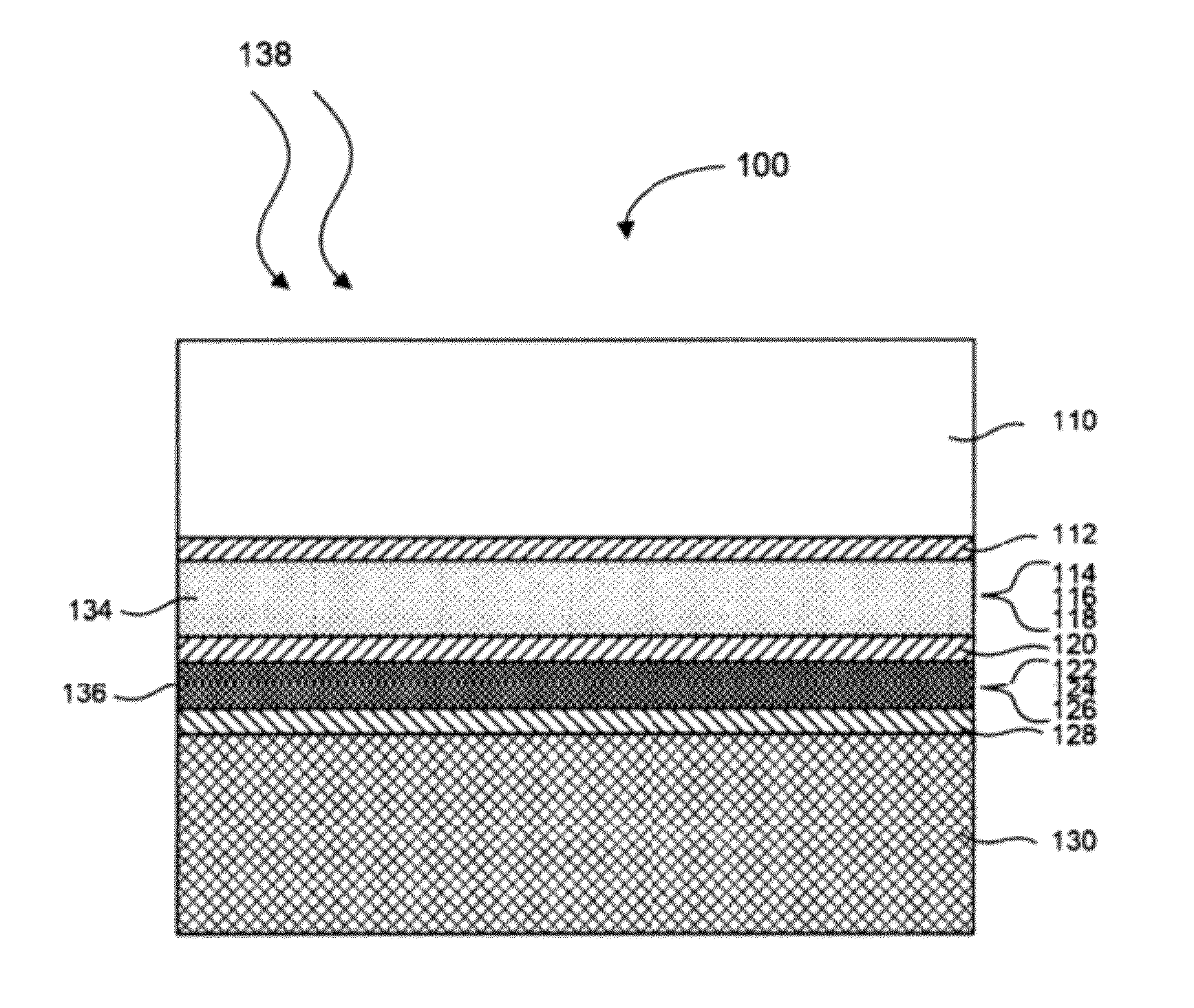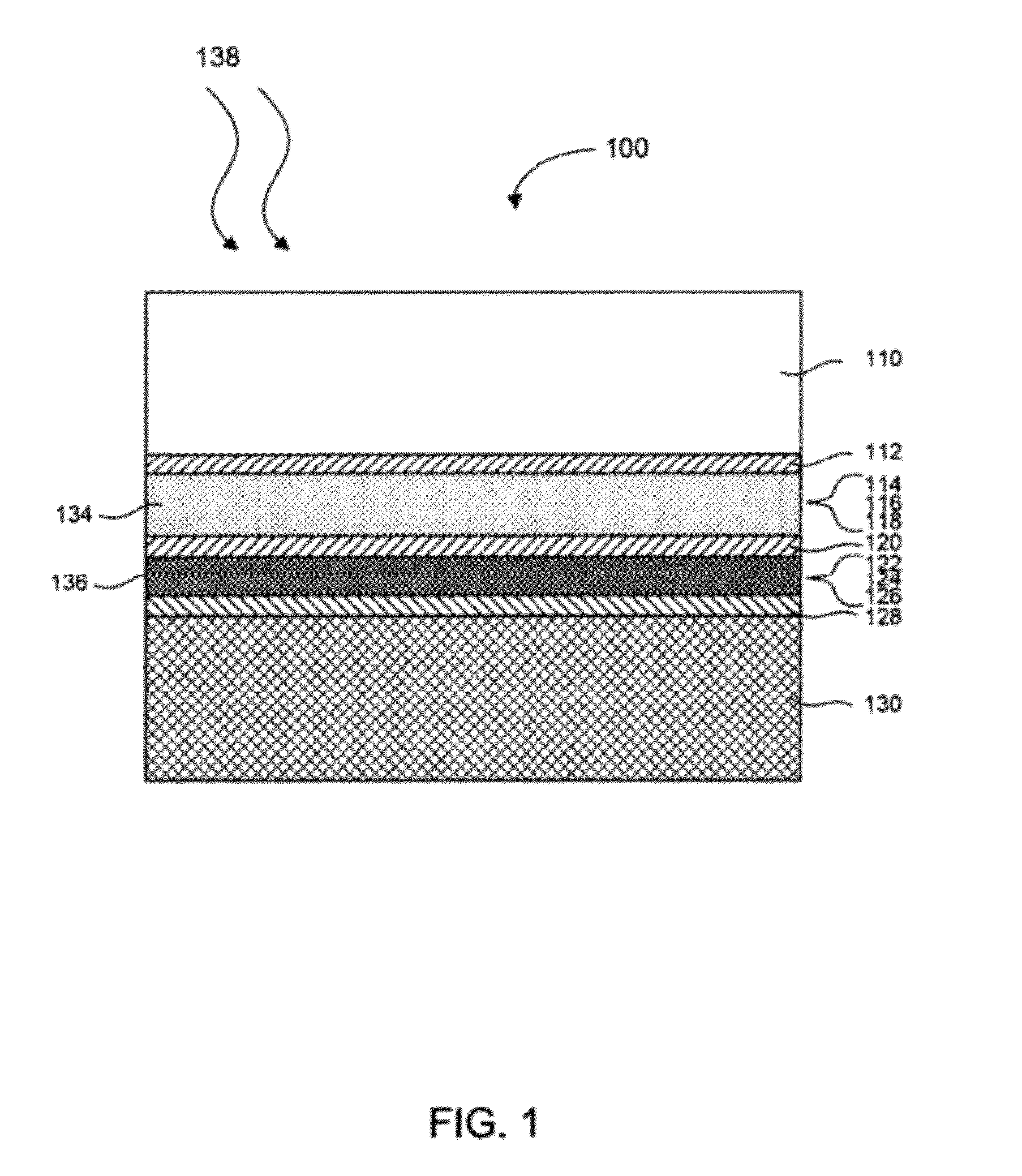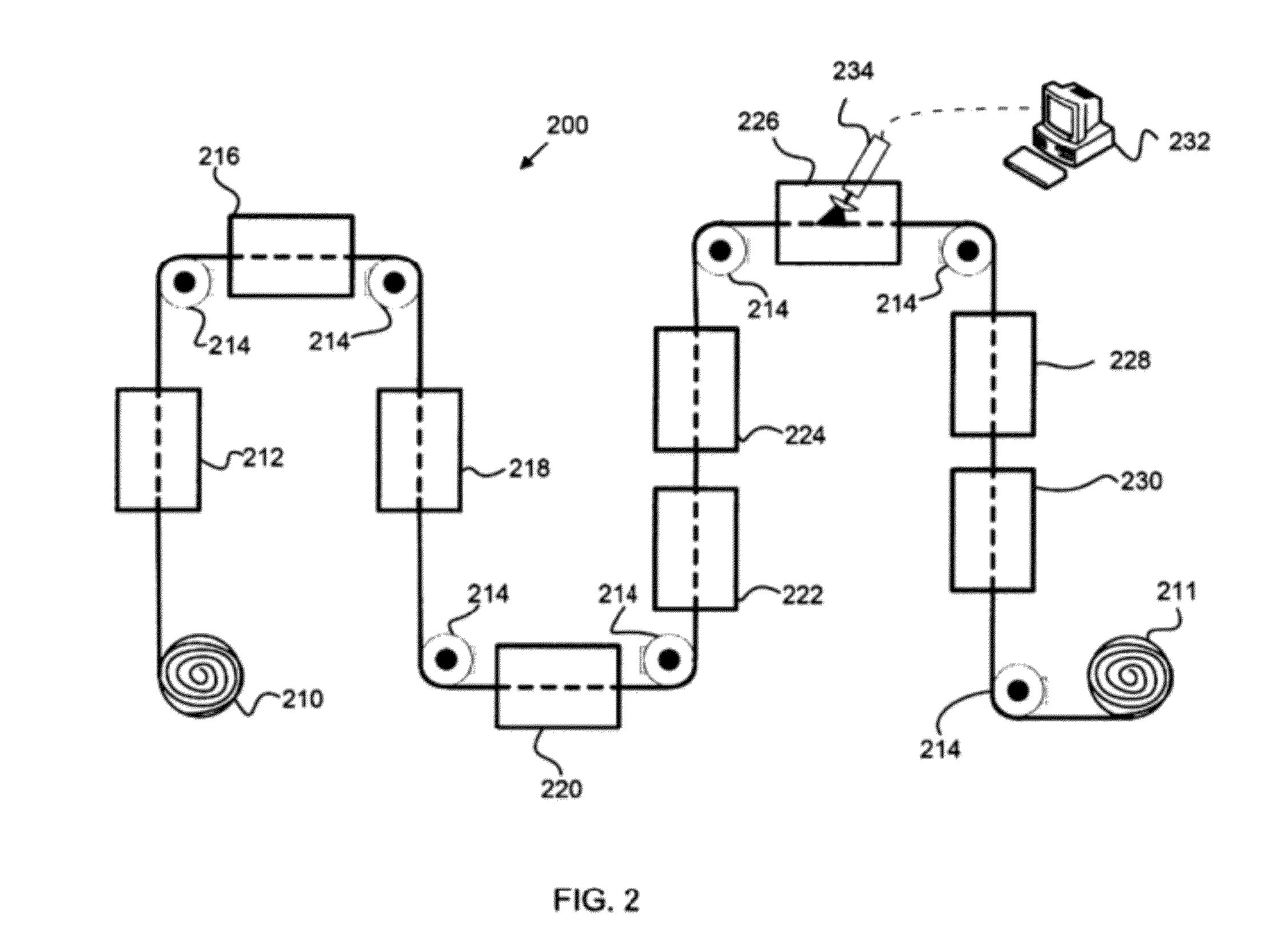Multi-Junction Semiconductor Photovoltaic Apparatus and Methods
- Summary
- Abstract
- Description
- Claims
- Application Information
AI Technical Summary
Benefits of technology
Problems solved by technology
Method used
Image
Examples
Embodiment Construction
[0036]As disclosed above, the present invention describes systems and articles of manufacture for providing multi-junction thin-film semiconductor photovoltaic devices and methods for making and using the same. In some embodiments, the multi-junction thin-film semiconductor device can include at least one textured portion to enhance absorption characteristics of the device. The textured portion can include a conical structure or microstructure morphology. For example, the textured portion can include a Lambertian structure having micron-sized height variations. In some embodiments, the textured portion can be formed by laser-processing or by other known techniques.
[0037]In some embodiments, at least a portion comprising a semiconductor material, for example silicon, is irradiated by a short pulse laser to create modified micro-structured surface morphology that includes a textured portion. The laser processing can be the same or similar to that described in. U.S. Pat. No. 7,057,256,...
PUM
 Login to View More
Login to View More Abstract
Description
Claims
Application Information
 Login to View More
Login to View More - R&D
- Intellectual Property
- Life Sciences
- Materials
- Tech Scout
- Unparalleled Data Quality
- Higher Quality Content
- 60% Fewer Hallucinations
Browse by: Latest US Patents, China's latest patents, Technical Efficacy Thesaurus, Application Domain, Technology Topic, Popular Technical Reports.
© 2025 PatSnap. All rights reserved.Legal|Privacy policy|Modern Slavery Act Transparency Statement|Sitemap|About US| Contact US: help@patsnap.com



